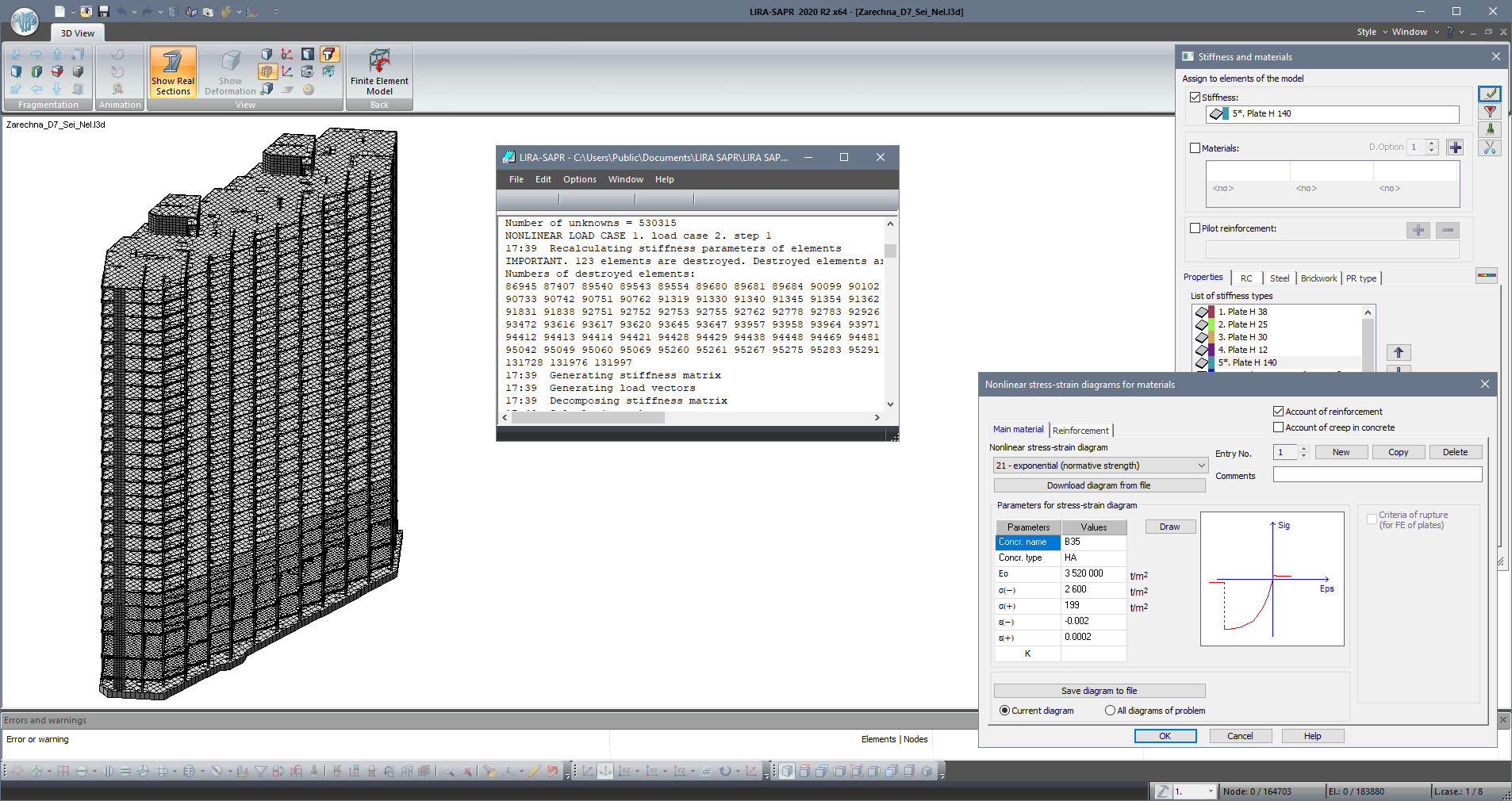Finite Element Analysis Statics, Dynamics, Stability
Basic options and method for static & dynamic analyses of linear/nonlinear deformed structures
Linear solver
realizes static and dynamic analyses of linear structures.
The finite element method (FEM) for displacements is realized. Finite element library includes more than 50 different types such as arbitrary bars, including elements on elastic foundation, triangular, rectangular and quadrilateral plate elements (wall-beam, shell, slab, including slab on elastic foundation); solids such as tetrahedron, parallelepiped, triangular and quadrangular prism, arbitrary convex hexagon and octagon; specific elements Ц spring of finite rigidity, joint compliance, out of contour element of soil foundation, etc.
Static analysis is performed on forces (concentrated and distributed) and displacements (initial displacements, temperature).
Dynamic analysis is performed according to response spectrum method.
Linear equations are solved by Gauss method. Profile of stiffness matrix is optimized by Сquotient tree algorithmТ and 'approximate minimum degree (AMD) ordering algorithm'.
Linear solver contains super-element method with one-level recursion. Linear solver contains several additional systems:
DCF Ц system calculates design combinations of forces from specified load cases Ц dead weight, service load, snow load, wind load, earthquake load, etc.;
STABILITY system enables you to perform stability analysis of the structure and determine stability factor and mode shapes;
LITERA system calculates principal and equivalent stresses according to different criteria of rupture;
DCL system calculates displacements and forces from linear combinations of load cases according to appropriate building codes;
FRAGMENT system enables you to determine load from one fragment of the structure on another fragment. For example, it is possible to determine loads from aboveground part of the structure on the foundation.
Design model Static analysis Determine forces DCF or DCL Design module Sketches of working drawings
Nonlinear solvers
Step-type nonlinear solver
Analysis of physically nonlinear bar systems, slabs and shells as well as geometrically nonlinear systems, including initially unstable systems (guys, guy trusses, tents, membranes). In this case step for determining equilibrium shape is selected automatically. For the rest of the cases the user could specify the step value. For physically nonlinear systems the stress-strain diagram is specified by the user and may be different in shape (exponential, picewise linear, etc.). It is possible to use bimaterial, for example, concrete with reinforcement bars. Based on this solver you could simulate 3D procedure of loading the structure. E.g. for reinforced concrete slab you could trace crack propagation process, plastic strain in compressed concrete and tensile reinforcement, obtain stress-strain state that causes the fracture. With this solver you could also analyse the structure taking account of physical and geometrical nonlinearity simultaneously.
Nonlinear iteration solver
Analysis of systems with one-way restraints, nonlinear soil bodies, etc. This FEM solver enables the user to carry out analysis with different loading and unloading paths, that is, in elastic-plastic approach.
Combined nonlinear solver
Analysis of different combined systems. For example, physically nonlinear RC slab (step-type solver) on nonlinear deformed soil (iteration solver), or physically nonlinear RC sheet piling strengthened with anchors (step-type solver) together with retained nonlinear-deformed soil (iteration solver), etc.



